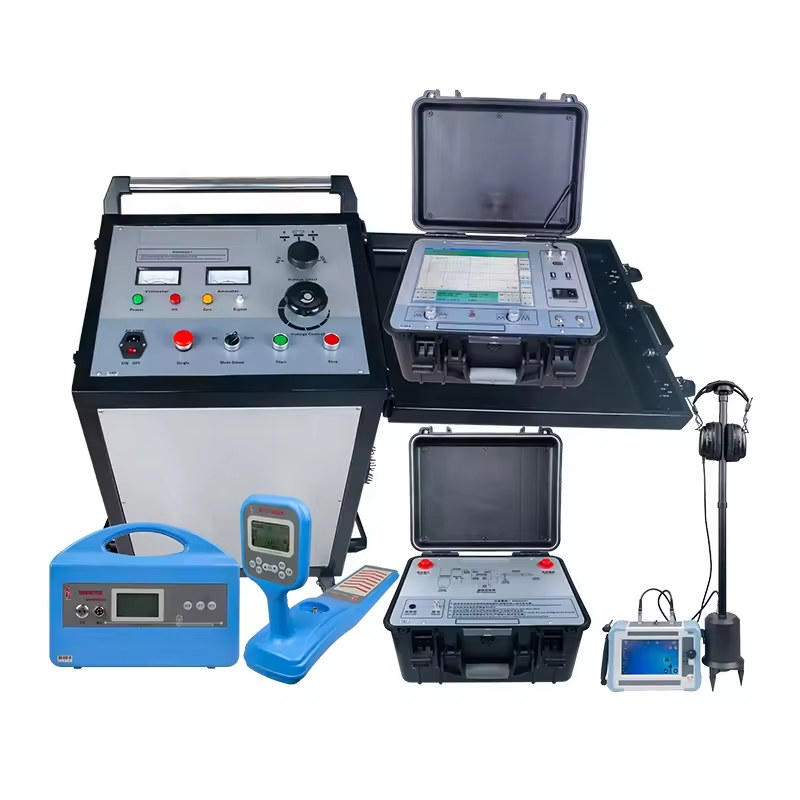Troubleshooting of cable lines
1. Communication cable common obstacle classification
(1) Mixed line: the same pair of core wires due to damage to the insulation layer in contact with each other called mixed line is also called self-mixed. Neighboring pairs of core wires due to damage to the insulation layer touching it is called it mixed. Joints have been subjected to strong tension or external damage to the core wire insulation layer injury parts often create a mixed line situation.
(2) Grounding: cable core insulation damage touching the shielding layer called grounding, it is due to external forces knocking, touching, smashing and other wear and tear of the cable core sheath or work inadvertently make the core grounding and formation.
(3) Disconnection: cable core one or several disconnected called disconnection, this phenomenon is generally due to the continuation or laying inadvertently make the core line fracture, damage by external forces, strong current burned off.
(4) Poor insulation: cable core line between the plastic for the insulation layer, due to the insulation by water and moisture attack, so that the insulation resistance drops, resulting in current spillage phenomenon known as poor insulation. It is generally by the joints in the sealing welding before the damp treatment is not enough, or because of the cable is injured in water, or inflatable into the moisture and other reasons caused by the core wire insulation long-term decline.
(5) String, murmur: in a pair of core line, you can hear another user call sound, known as crosstalk; listening with the receiver, you can hear "buzz" or "giggle" sound, known as murmur. Line string, murmur is mainly due to the cable core wire misconnection, or damage to the balance of the core line capacitance, loose pairs of joints caused by resistance imbalance, external interference sources such as magnetic field into the impact and so on.
2.Troubleshooting
(1) Mixed line
① cause analysis: the joints have been subjected to strong tension or external damage to the core wire insulation layer is often caused by injuries to the parts of the mixed line.
② processing methods: more multimeter, megohmmeter and cable fault tester instrumentation to determine the location of the fault, to connect the processing.
(2) Grounding
① Cause analysis: mostly due to external forces, bumping, smashing and other wear and tear bad cable core sheath or work inadvertently make the core grounded and formed.
② Processing methods: more bridges or cable fault testers and other instruments to determine the location of the fault, to continue to deal with.
(3) Broken wire
① Cause analysis: generally due to the connection or laying of inadvertent core wire breakage, damage by external forces, strong current burned off.
② Processing methods: more multimeter, cable fault tester and other instruments to determine the location of the fault, to be connected to deal with.
(4) Poor insulation
① Reason analysis: generally by the joints in the sealing welding before the damp treatment is not enough, or because the cable is injured by water, or inflatable into the moisture and other reasons caused by long-term decline in core wire insulation.
② Processing methods: more multimeter, megohmmeter and cable fault tester instrument to determine the location of the fault, to continue to deal with.
(5) String, murmur
① Reason analysis: mainly due to the cable core wire misconnection, or destruction of the balance of the core wire capacitance, loose pairs of joints caused by resistance imbalance, external interference sources such as magnetic field into the impact and so on.
② Processing methods: more multimeter and cable fault tester instrumentation to determine the location of the fault, to be connected to deal with.
(a) Pulse reflection method Pulse reflection method, also known as the radar method or echo method, to send a voltage pulse to the cable, the use of sending pulses and obstacles to reflect the pulse of the time difference between the pulse and obstacles to determine the principle of obstacles to the distance is proportional to the obstacle. Pulse reflection method was first used in the test of long-distance cable line obstacles. Due to the high-frequency pulse signal attenuation of the telephone cable, and other reasons, in the telephone cable line obstacle test encountered difficulties. With the development of science and technology, especially modern microelectronics technology, the test method and its instrumentation have made great progress, and the sensitivity has been greatly improved, and it has been successfully applied to the telephone cable line obstacle test.
(b) Comprehensive Test Instrumentation The impulse reflection method is dependent on a significant change in impedance at the point of obstruction and is not suitable for measuring poorly insulated obstructions with large resistance values, whereas the bridge method is capable of measuring obstructions with resistance values of up to several megohms. When cable faults occur, obstacles must be eliminated quickly to restore communications as soon as possible, first of all, the nature of the obstacle should be judged and then select the appropriate instrument to determine the precise location of the obstacle in time to carry out cable line repair work, the determination of the precise location of the obstacle is generally used to determine the precise location of the obstacle to the instrument cable fault tester.
RDCD-Ⅱ Cable Fault Testing System is the achievement of our company's continuous improvement and innovation for many years. The product is the leading product of cable fault testing instruments at home and abroad at present, applying modern power electronic technology.

Click on the product model RDCD-Ⅱnumber for more product details and parameters.
Click Contact Us for a more detailed quote.




